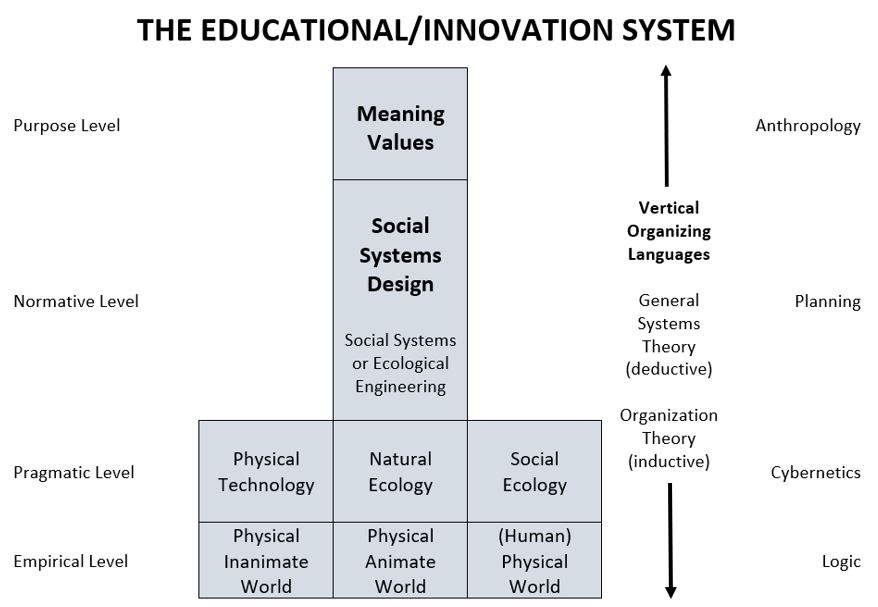8.3 Future of Interdisciplinarity
One of the top higher-educational analysis firms, Quacquarelli Symonds, points to the need for interdisciplinarity to propel learning into the future[7]. As previously mentioned, students can develop advanced views of complex situations. In addition, structuring knowledge for the greater good is ethically grounding, and thus is valued from the relationships that are built inside and outside of the classroom.
A clearer and more logical understanding can be achieved through the interdisciplinary process. In the diagram below, Klein suggests an educational/innovation system of interdisciplinarity, which scaffolds different sociological, psychological, technological, and physical systems towards interdisciplinary goals within learning[3].

This sets a precedent towards achieving lifelong learning within higher-educational systems. According to Nijhof, lifelong learning follows five elements, as outlined by the Organisation for Economic Cooperation and Development (OECD), to ensure lifelong learning is achieved[8]:
- Improving the accessibility and quality of initial education
- Improving pathways and transitions during a lifespan of learning
- Rethinking and reflecting on roles and responsibilities for more clarity in a multitude of learning organizations
- Increasing incentives for the proliferation and investment of lifelong learning
- Monitoring and evaluating the progress of lifelong learning
The ultimate goal of lifelong learning within an interdisciplinary framework is to ensure that learning is connected on professional and personal levels, and that it is autonomous, continual, and self-motivated. This is a classical liberal approach to interdisciplinarity that uses an ethical lens of enhancing lifelong learning, not only for social or organizational goals, but for personal goals as well. This is echoed in the Educational/Innovation System where the individual’s control of lifelong learning, through areas of logic and cybernetics, is connected on a personal level to planning and anthropology that increases understanding of the social and physical world.
Currently in Canada, some concerns arise around lifelong learning, given that there is a lag in productivity, and a skills crisis, due to the high proportion of post-secondary completion and a perceived lack of job entrance. What interdisciplinarity can provide is a pathway for using knowledge in one field, and applying it to another for personal and professional advancement. Furthermore, interdisciplinarity goes further and offers a level of self-action and personal responsibility for controlling individuals’ lifelong learning.

